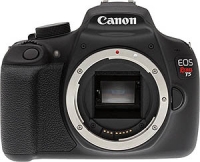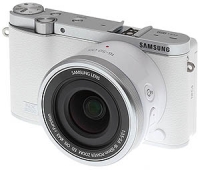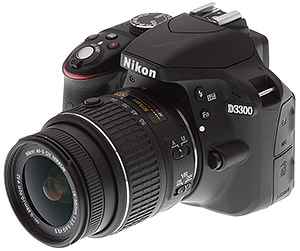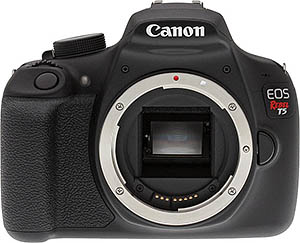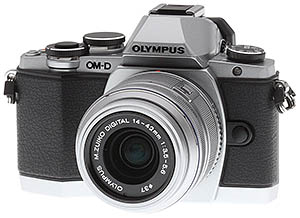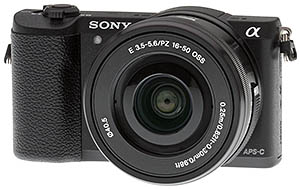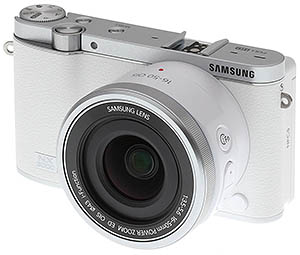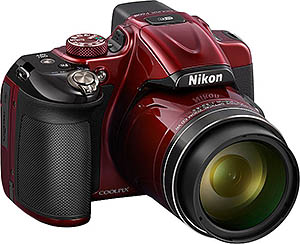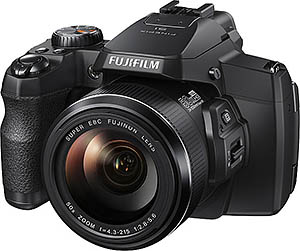Cameras of the Year: Best Entry-level Cameras of 2014
posted Monday, December 22, 2014 at 6:50 PM EDT
The Imaging Resource Camera of the Year Awards
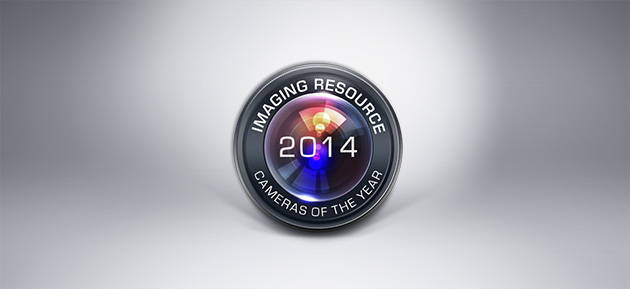
Any passionate photographer will tell you the same thing: 2014 was an amazing year to be a photographer. Sony brought us the world's first full-frame camera with in-body image stabilization in the A7 II, as well as the A6000 with its amazing feature set for the price. Canon's 7D Mark II improved on the incredible Dual Pixel focusing technology first found in the 70D, and Nikon's D750 brought more of the D810 features to a lower price point than we thought would be possible. In addition, there were a few terrific offerings in the lens world including the Olympus 40-150mm f/2.8 Pro, while brand new technologies like Panasonic's Depth from Defocus demonstrate the mirrorless players have plenty of room to improve focusing technology.
Best Entry-Level Cameras of 2014
But while 2014 was a great year to be a photographer, it was an incredible year to be a beginning photographer. The level of functionality available in even the most entry-level of cameras is really unparalleled in photo history. And not only is image quality as high as it's ever been, but the quality of video output continues to increase by leaps and bounds. For this reason we're kicking our Camera of the Year awards off at the so-called 'low' end. While gear hounds like us salivate over the latest-and-greatest empty-the-pocketbooks cameras and lenses, the most remarkable thing for us was just how good the most affordable cameras have become.
Camera of the Year, Best Entry-Level DSLR: Nikon D3300

With the Nikon D3200 (D3200 vs D3300) taking the top spot in our 2012 Camera of Year Awards for Best Entry-Level ILC, it's no surprise that the follow-up to this excellent little camera is taking the crown for Best Entry-Level DSLR yet again. The Nikon D3300, while sporting a relatively similar exterior design and control layout to its predecessor, offers better ergonomics and lower weight with a carbon fiber-reinforced construction. Under the hood, Nikon transferred much of the D5300's technology into the D3300, including the same faster EXPEED 4 processor and a 24.2-megapixel sensor without an optical low-pass filter similar to that in the D5300 (D5300 vs D3300).
The filterless sensor is quite unique for a consumer-oriented camera. It risks increasing moiré and aliasing (which we didn't encounter in real-world shooting), but the benefit is excellent sharpness and resolution. The new sensor and faster image processor together give the D3300 exceptional image quality as well as excellent high ISO capabilities, especially for an entry-level model. The dynamic range is also very good, the buffer capacity is large for good continuous burst shooting, and battery life is above average. Nikon also beefed-up video recording features by adding an external mic jack and support for 1080p video recording at 60fps.
Bottom line, the Nikon D3300 is impressively feature-packed for what's still classified as an 'entry-level' camera, offered at a very affordable price. It borrows a lot of amenities from Nikon's higher-end DSLRs, and while certain aspects are a little underwhelming -- low-light AF can be slow and it lacks both auto-exposure bracketing and built-in Wi-Fi -- the Nikon D3300 is nevertheless an excellent, budget-friendly DSLR. It's well-built, comfortable and easy to use for novice photographers, though it has the image quality performance and video-shooting chops that might pique the interest of more advanced users on a budget or needing a capable back-up to their higher-end DSLR. This is a great entry-point to the Nikon line; it's an affordable, easy-to-use camera, yet one that's full-featured enough to keep you happy for years to come, as your skills evolve.
Buy from Adorama | Buy from Amazon | Buy from B&H Photo
Camera of Distinction, Entry-Level DSLR: Canon T5
The entry-level Canon DSLRs have always provided great bang-for-your-buck in terms of feature set, autofocus performance and image quality at a budget-friendly price point. With the Canon Rebel T5, the long-awaited update to the Rebel T3, Canon continues this winning formula by updating the imaging sensor, improving HD video resolution, and giving the exterior design a little makeover, with rubberized handgrip a la the T5i.
While other features and specs remain largely unchanged compared to the previous model, the Canon T5 produces very good image quality, with excellent color and hue accuracy and decent performance with fast single-shot cycle times and quick autofocus. While it might not be a speed demon at burst shooting and higher ISO performance is not as good as some competitors or higher-end models, the Canon Rebel T5 is nevertheless a comfortable, easy to use camera at a great price. The Canon T5 also serves as an inexpensive entry point into Canon's vast range of EF and EF-S lenses.
Buy from Adorama | Buy from Amazon | Buy from B&H Photo
Camera of the Year, Best Entry-level Mirrorless:
Olympus E-M10
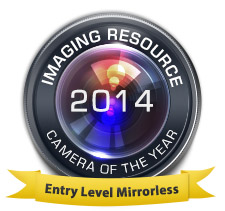
Olympus made big waves with the first OM-D camera, the E-M5 (E-M5 vs E-M10), helping to popularize the technologically-advanced yet retro-styled camera. The E-M5 was a smash hit, even winning our Compact System Camera of the Year award in 2012. Olympus followed with the professional-level E-M1 (E-M1 vs E-M10), with more advanced features, such as on-chip phase detect AF and a faster image processor. The E-M1 took our 'Best Professional Camera of the Year' award for 2013. While the E-M5 was in the mid-range price-wise and the E-M1 being undoubtedly the pricier, flagship model, more entry-level photographers were left out of the OM-D family. Olympus soon had the solution, though, with the OM-D E-M10 -- the "OM-D for all" as they called it.
The Olympus E-M10 is a unique camera that blends features from the flagship E-M1 camera and the earlier E-M5. It's got the faster image processor and higher-precision AF area grid, as well as a similar AA-filterless sensor of the E-M1. The E-M10 then borrows the more compact size of the E-M5 -- although the E-M10 is slightly smaller -- making it an excellent go-anywhere, carry-all-the-time kind of camera. And although it uses the slower contrast-detect AF system, the E-M10 is perfectly enjoyable and super snappy for almost all subject matter. The E-M10 also includes built-in Wi-Fi and is the first OM-D camera with a built-in pop-up flash.
All told, the Olympus E-M10 is a solid camera at an outstanding budget-friendly price point. It has excellent image quality and is an all-around fast and capable performer. The E-M10 lowers the cost to the expansive world of interchangeable lenses for the Micro Four Thirds ecosystem, without compromising on image quality or performance. If you're looking to upgrade to an interchangeable lens camera system and aren't sure if you want the bulk of a DSLR, the E-M10 is our choice for the best entry-level mirrorless camera for 2014.
Body only: Buy from Adorama | Buy from Amazon | Buy from B&H Photo
Kit with 14-42mm lens: Buy from Adorama | Buy from Amazon | Buy from B&H Photo
Camera of Distinction, Entry-level Mirrorless: Sony A5100
Sony A5100 is another terrific option in the entry-level mirrorless category. It's quite small and lightweight, and has a zoom toggle surrounding the shutter button that will be familiar to most users stepping up from traditional point-and-shoot cameras (the kit lens has "power zoom" capabilities and can therefore be controlled via the camera body). And with a 180° flip-up screen and a built-in flash, the camera has the basics covered for anyone interested in taking their smartphone or point-and-shoot chops to the next level.
And yet, the A5100 houses the same sensor and image processor as in the extremely popular Sony A6000 (A6000 vs A5100), with virtually identical overall image quality and ISO performance, making it a more powerful imaging tool than its unassuming body would convey at first glance. This makes it not only a good option for step-up users but also for A6000 shooters looking for a capable back-up for a bit less out of the bank (it retails for $100 less than the A6000, though street prices may vary). Add to this both Wi-Fi and NFC capabilities, as well the ability to control the camera remotely from a smart device, and you have quite a capable little shooter indeed.
Body Only: Buy from Adorama | Buy from Amazon | Buy from B&H Photo
Kit with 16-50mm lens: Buy from Adorama | Buy from Amazon | Buy from B&H Photo
Camera of Distinction, Entry-level Mirrorless: Samsung NX3000
Samsung clearly wants to make your acquaintance if you're a cellphone or compact camera user interested in expanding your photography horizons, as it continues to develop products with excellent performance to cost ratios. The NX3000 falls squarely into this category, sporting a large 20.3MP APS-C sensor and yet retailing (with a 16-50mm power zoom kit lens!) for only ~$360 as of this writing. That is a lot of bang for the buck, folks, which made this camera a no-brainer for our value category in these awards as well (shown below).
And if all that isn't enough to tempt you, this camera also ships with Adobe's Lightroom 5 in the box! Not only do you get powerful post-processing that would usually run you $139 right out of the gate, but you get a camera easily the equal of models $100 more expensive; that should leave plenty of money to spare for a capable prime lens to go along with this kit. (To see images shot with not only the 16-50mm PZ kit lens but also Samsung's 45mm f/1.8 and 60mm f/2.8 macro lens, please visit our Samsung NX3000 gallery page!)
Kit with 16-50mm lens: Buy from Adorama | Buy from Amazon | Buy from B&H Photo
Kit with 20-50mm lens: Buy from Adorama | Buy from Amazon | Buy from B&H Photo
Camera of the Year, Best Superzoom Camera: Nikon P600
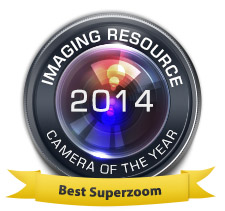
When you sport the longest maximum optical focal length of any currently offered superzoom camera (1440mm) and then back that tremendous reach with the best image quality in the class, you're going to turn some heads in the superzoom world. The Nikon P600 turned our heads the first time we pixel-peeped a full telephoto test image, and continued doing so for most of our Superzoom Shootout 2014 testing.
While it offers neither the weather resistance nor the super-solid build quality of the Fujifilm S1 (below; detailed comparison: S1 vs P600), and is also rather slow while writing to the SD card after a burst of continuous shots, we felt the overall image quality still trumped the competition enough to merit this award. The P600 also not surprisingly took the top honors in our Best Superzoom 2014 competition, one of only three models we put on the "recommended" list (the other cameras included the Fujifilm S1 and Canon's SX50 HS from 2012).
As we stated in our superzoom shootout summary page: "The difference in image quality between the P600 and some of its competitors is frankly astonishing. If you can live with its slow buffer clearing for full-resolution bursts and you don't need much in the way of weather resistance, there's no better choice currently on the market."
Buy from Adorama | Buy from Amazon | Buy from B&H Photo
Camera of Distinction, Superzoom Camera: Fujifilm S1
The Fujifilm S1 features both weather resistance and a professional build quality, giving it an exterior that's at the same time rugged, attractive and also enjoyable to hold. High-quality image stabilization and great burst-shooting performance provide the beginnings of the perfect superzoom camera in our book.
But that's only half the book, while the other half contains a few notable issues that, while not deal-breakers, kept this camera from taking the top slot, both in these awards and also in our Best Superzoom 2014 competition. The biggest issue is that its JPEG engine produces over-sharpened, contrasty images with no way to dial the processing down internally, basically making it for most uses a RAW-files only camera (so it's fortunate that it does provide RAW file support!). That said, you can get some gorgeous images from its RAW files. Finally, Fujifilm S1 doesn't actually zoom out to its stated 1200mm equivalent range; it came out closer to ~1100mm in our tests.
We thus found the S1 a bit more limited in its abilities than the Nikon P600 (P600 vs S1). That being said, though, if you need a camera that can stand up to the harsh elements, don't mind a somewhat shorter (though still absurdly long) zoom range and prefer to work from RAW files, this model would be the better bet between the two. And again, it sure does feel good in the hands!
Buy from Adorama | Buy from Amazon | Buy from B&H Photo
Camera of the Year, Best Value: Sony A6000
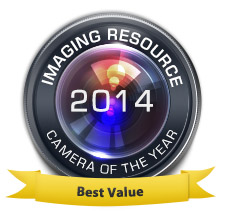
The Sony A6000 isn't the cheapest camera on the market and we already named its little brother, the A5100 (A5100 vs A6000), a camera of distinction for 'entry-level mirrorless.' So why have we given the A6000 our Camera of the Year award in the 'Best Value' category? Simple: The functionality it offers for $600 including the kit lens is simply unprecedented.
The A6000 is one of the few interchangeable lens camera with an EVF available in a kit for $600 [The E-M10 (E-M10 vs A6000) was available briefly for the price, but those deals were limited to Black Friday specials. And Panasonic's excellent GX7 (GX7 vs A6000) currently offers the feature at this price, but was released last year and is thus ineligible for the award in 2014].
We lauded the A6000 for its excellent image quality, high resolution and very good dynamic range. And we were as impressed with the camera's video capabilities as we were its image quality.
The A6000 acquires focus blazingly fast and phase-detect points cover about 84% of its sensor (unusually high, so you'll enjoy the fast focus acquisition most anywhere in the frame). We found its autofocus gave us about 4-6 sharp "keepers" per second; it has an 11fps burst speed, but somewhere around 50% of our shots of fast-moving burst-mode subjects were sharply focused. So while we didn't get 100% keepers at the A6000's full 11fps burst speed, 4-6 keepers per second is good enough for most action shooting, and pretty amazing to find in a $600 camera.
All in all, the A6000 is an incredibly impressive camera for the price. Judging by the traffic to its review on our site and sales information from our affiliates, a huge number of our readers agreed: The A6000 in its body-only and kit bundles have outsold every other camera this holiday season.
Body only: Buy from Adorama | Buy from Amazon | Buy from B&H Photo
Kit with 16-50mm lens: Buy from Adorama | Buy from Amazon | Buy from B&H Photo
Camera of Distinction, Best Value: Samsung NX3000
The Samsung NX3000 is a camera of distinction this year in our Best Entry-level Mirrorless category, shown above, and for good reason given its large sensor and overall capabilities as a quality imager. But it's the unbelievable ongoing street price of roughly $360 (with the 16-50mm PZ kit lens!) that warrants its inclusion in this budget category. As we stated in the mirrorless write-up, that's a lot of bang for the buck! Throw in a free copy of Adobe Lightroom 5 and you've got quite a bit of horsepower for a humble $360 indeed.
(To see images shot with not only the 16-50mm PZ kit lens but also Samsung's 45mm f/1.8 and 60mm f/2.8 macro lens, please visit our Samsung NX3000 gallery page!)
Kit with 16-50mm lens: Buy from Adorama | Buy from Amazon | Buy from B&H Photo
Kit with 20-50mm lens: Buy from Adorama | Buy from Amazon | Buy from B&H Photo
Imaging Resource Cameras and Lenses of the Year Awards
This is only the first round in our multi-part Cameras and Lenses of the Year Awards for 2014. We're also announcing the best lenses of the year today, with our picks for the best compact cameras of 2014 coming on the 26th. Look for our awards for best professional and enthusiast cameras of 2014 and our overall choice for the Camera of the Year next week.
Best Entry-Level Cameras of 2014 (this page)
Best Professional & Enthusiast Cameras of 2014
Camera of the Year, 2014 (and Special Awards) coming soon

